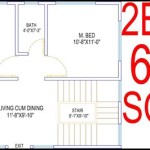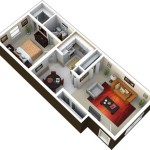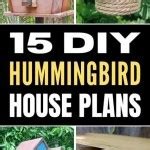A house floor plan serves as a blueprint for the layout and organization of a living space. It visually depicts the arrangement of rooms, walls, doors, windows, and other architectural elements within a home. Floor plans are essential tools for architects, builders, and homeowners alike, providing a comprehensive understanding of the spatial relationships and functionality of a building.
Whether you’re designing a new home or renovating an existing one, selecting the perfect floor plan is crucial. It determines the flow of movement throughout the house, the size and shape of each room, and the overall ambiance of the living space. From open-concept layouts that promote seamless transitions between areas to traditional designs that prioritize privacy and defined spaces, the options are endless.
In the following sections, we’ll delve into the key considerations for choosing the best house floor plan, explore different types of plans, and provide valuable tips to help you find the ideal layout for your specific needs and preferences.
When selecting the best house floor plan for your needs, there are several key points to consider:
- Functional layout
- Flow of traffic
- Room size and shape
- Natural light
- Privacy and noise
- Outdoor living spaces
- Future needs
- Resale value
- Personal preferences
- Budget
By carefully considering these factors, you can find a floor plan that not only meets your current requirements but also aligns with your long-term goals and aspirations for your living space.
Functional layout
A functional layout is one that is designed to maximize efficiency and comfort within a home. It takes into account the flow of traffic, the placement of rooms, and the overall organization of the space. A well-planned functional layout will allow for easy movement between rooms, minimize wasted space, and create a comfortable and inviting living environment.
When considering the functional layout of a house, there are several key factors to keep in mind:
- The flow of traffic: The flow of traffic refers to the way that people move through a home. A good functional layout will allow for easy movement between rooms, without having to backtrack or go through unnecessary spaces. This is especially important in homes with multiple floors.
- The placement of rooms: The placement of rooms is another important factor to consider when planning a functional layout. Rooms that are used frequently, such as the kitchen and living room, should be placed near the center of the home, while less frequently used rooms, such as guest bedrooms and offices, can be placed in more remote areas.
- The overall organization of the space: The overall organization of the space refers to the way that the different rooms are connected to each other. A well-organized layout will create a sense of flow and continuity throughout the home.
By carefully considering the functional layout of a house, you can create a space that is both efficient and comfortable to live in. A good functional layout will make your daily life easier and more enjoyable.
Flow of traffic
The flow of traffic refers to the way that people move through a home. A good functional layout will allow for easy movement between rooms, without having to backtrack or go through unnecessary spaces. This is especially important in homes with multiple floors.
- Minimize hallways and corridors: Hallways and corridors can take up a lot of space and can make it difficult to move around a home. A good functional layout will minimize the use of hallways and corridors, and will instead use open floor plans and other space-saving design techniques.
- Create clear pathways: When designing the flow of traffic in a home, it is important to create clear pathways between rooms. This will help to avoid congestion and will make it easy for people to move around the home.
- Avoid dead-end spaces: Dead-end spaces are areas that can only be accessed from one direction. These spaces can be frustrating and can make it difficult to move around a home. A good functional layout will avoid dead-end spaces, and will instead use open floor plans and other design techniques to create a more fluid flow of traffic.
- Consider the location of stairs: If a home has multiple floors, it is important to carefully consider the location of the stairs. The stairs should be placed in a central location, and they should be easy to access from all of the rooms in the home.
By carefully considering the flow of traffic in a home, you can create a space that is both efficient and comfortable to live in. A good flow of traffic will make it easy for people to move around the home, and it will help to create a more inviting and enjoyable living environment.
Room size and shape
The size and shape of a room can have a significant impact on its overall functionality and livability. When selecting a house floor plan, it is important to carefully consider the size and shape of each room to ensure that it meets your needs and preferences.
- Size: The size of a room is determined by its length, width, and height. The size of a room should be appropriate for its intended use. For example, a living room should be large enough to accommodate furniture and seating for guests, while a bedroom should be large enough to fit a bed, dresser, and nightstands. The size of a room can also affect its overall feel. A large room can feel spacious and inviting, while a small room can feel cozy and intimate.
- Shape: The shape of a room can also affect its functionality and livability. A square or rectangular room is the most efficient shape, as it allows for the most efficient use of space. However, a room with an irregular shape can be more interesting and visually appealing. For example, a room with a bay window or a curved wall can add character to a home.
- Proportion: The proportion of a room refers to the relationship between its length, width, and height. A well-proportioned room will feel balanced and harmonious. A room that is too long and narrow can feel cramped and uncomfortable, while a room that is too wide and short can feel squat and uninviting.
- Flow: The flow of a room refers to the way that people move through it. A well-designed room will have a good flow, which will make it easy for people to move around and interact with each other. A room with a poor flow can feel cramped and uncomfortable, and it can be difficult to move around.
By carefully considering the size, shape, proportion, and flow of each room, you can create a home that is both functional and beautiful.
Natural light
Natural light is essential for creating a healthy and inviting home. It can improve your mood, boost your energy levels, and help you to sleep better at night. When selecting a house floor plan, it is important to consider the amount of natural light that each room receives.
- Windows and doors: The number and placement of windows and doors can have a significant impact on the amount of natural light that a room receives. Rooms with large windows and doors will be brighter and more inviting than rooms with small windows and doors. When selecting a house floor plan, pay attention to the size and placement of the windows and doors in each room.
- Orientation: The orientation of a room can also affect the amount of natural light that it receives. Rooms that face south will receive more natural light than rooms that face north. If you live in a northern climate, it is important to select a house floor plan that has rooms that face south. This will help to ensure that your home receives as much natural light as possible.
- Skylights: Skylights are a great way to add natural light to a room. Skylights can be placed in any room, but they are especially effective in rooms that do not have a lot of windows. Skylights can also be used to create a more dramatic and visually appealing space.
- Light shelves: Light shelves are a type of shelf that is designed to reflect light into a room. Light shelves can be placed on any wall, but they are most effective when placed on a wall that faces a window. Light shelves can help to distribute natural light more evenly throughout a room.
By carefully considering the amount of natural light that each room receives, you can create a home that is both healthy and inviting. Natural light can improve your mood, boost your energy levels, and help you to sleep better at night.
Privacy and noise
Privacy and noise are important considerations when selecting a house floor plan. A good floor plan will provide privacy for each member of the household, and it will also minimize noise levels. Consider the needs and preferences of everyone living in the home when selecting a floor plan.
- Separate sleeping areas: One of the most important aspects of privacy in a home is the separation of sleeping areas. The master bedroom should be located in a private area of the home, away from the other bedrooms. The other bedrooms should also be located in a separate area of the home, if possible. This will help to ensure that everyone in the household has a private space to sleep and relax.
- Private bathrooms: Each bedroom should have its own private bathroom, if possible. This will help to ensure that everyone in the household has privacy when using the bathroom. If it is not possible to have a private bathroom for each bedroom, consider having a shared bathroom that is located in a private area of the home.
- Soundproofing: Soundproofing can be used to reduce noise levels in a home. Soundproofing can be installed in walls, floors, and ceilings. It can also be used to create soundproof rooms, such as home theaters or music studios.
- Noise-reducing features: There are a number of noise-reducing features that can be incorporated into a house floor plan. These features include carpeting, rugs, and curtains. These features can help to absorb sound and reduce noise levels in a home.
By carefully considering privacy and noise when selecting a house floor plan, you can create a home that is both comfortable and enjoyable for everyone in the household.
Outdoor living spaces
Outdoor living spaces are an important part of any home. They provide a place to relax, entertain guests, and enjoy the outdoors. When selecting a house floor plan, it is important to consider the type of outdoor living space that you want and the amount of space that you have available.
- Patios: Patios are a great way to add outdoor living space to your home. They can be made from a variety of materials, such as concrete, pavers, or wood. Patios can be used for a variety of activities, such as grilling, dining, and entertaining guests.
- Decks: Decks are another popular option for outdoor living spaces. They are typically made from wood or composite materials. Decks can be elevated or ground-level, and they can be used for a variety of activities, such as grilling, dining, and sunbathing.
- Porches: Porches are a great way to add covered outdoor living space to your home. They can be attached to the front, back, or side of the house. Porches can be used for a variety of activities, such as relaxing, reading, and entertaining guests.
- Sunrooms: Sunrooms are a great way to add year-round outdoor living space to your home. They are typically made from glass or other transparent materials. Sunrooms can be used for a variety of activities, such as relaxing, reading, and gardening.
When selecting an outdoor living space, it is important to consider the size of the space, the type of activities that you want to use it for, and the amount of maintenance that you are willing to do. By carefully considering these factors, you can select an outdoor living space that meets your needs and preferences.
Future needs
When selecting a house floor plan, it is important to consider your future needs. This includes thinking about how your family may change in the future, as well as how your lifestyle may change. For example, if you are planning to have children, you may want to select a floor plan that has a dedicated playroom or study area. If you are planning to retire in the home, you may want to select a floor plan that has a first-floor master suite and accessible features.
Here are some other future needs to consider when selecting a house floor plan:
- Aging in place: If you plan to age in place, you may want to select a floor plan that has a first-floor master suite and accessible features, such as wider doorways and roll-in showers. You may also want to consider a floor plan that has a separate living space for a caregiver.
- Changing family needs: If you have children, you may want to select a floor plan that has a dedicated playroom or study area. You may also want to consider a floor plan that has a separate space for guests.
- Lifestyle changes: If you are planning to retire in the home, you may want to select a floor plan that has a first-floor master suite and accessible features. You may also want to consider a floor plan that has a dedicated space for hobbies or activities.
- Resale value: When selecting a house floor plan, it is important to consider the resale value of the home. A well-designed floor plan that meets the needs of a variety of buyers will have a higher resale value than a poorly designed floor plan.
By carefully considering your future needs when selecting a house floor plan, you can create a home that will meet your needs for many years to come.
Resale value
When selecting a house floor plan, it is important to consider the resale value of the home. A well-designed floor plan that meets the needs of a variety of buyers will have a higher resale value than a poorly designed floor plan.
- Universal appeal: A floor plan with universal appeal will be attractive to a wider range of buyers, which will increase the resale value of the home. Universal appeal means that the floor plan should be functional, efficient, and aesthetically pleasing. It should also be adaptable to different lifestyles and needs.
- Open floor plans: Open floor plans are very popular with buyers, and they can increase the resale value of a home. Open floor plans create a more spacious and inviting atmosphere, and they allow for more natural light. They are also more flexible and adaptable to different lifestyles and needs.
- Outdoor living spaces: Outdoor living spaces are another popular feature that can increase the resale value of a home. Buyers are looking for homes that offer opportunities to relax and entertain outdoors. Outdoor living spaces can include patios, decks, porches, and sunrooms.
- Energy efficiency: Energy efficiency is becoming increasingly important to buyers, and it can increase the resale value of a home. Buyers are looking for homes that are energy efficient, which can save them money on their utility bills. Energy efficiency can be achieved through a variety of features, such as energy-efficient appliances, windows, and insulation.
By carefully considering the resale value of a home when selecting a floor plan, you can increase the value of your investment and make your home more attractive to buyers in the future.
Personal preferences
When selecting a house floor plan, it is important to consider your personal preferences. This includes thinking about your lifestyle, your needs, and your aesthetic preferences. There is no right or wrong answer when it comes to personal preferences, but it is important to choose a floor plan that you will be happy with for many years to come.
- Lifestyle: Your lifestyle will have a big impact on the type of floor plan that you choose. For example, if you love to entertain, you may want to select a floor plan with a large open kitchen and dining area. If you work from home, you may want to select a floor plan with a dedicated home office.
- Needs: Your needs will also play a role in the type of floor plan that you choose. For example, if you have a large family, you may want to select a floor plan with multiple bedrooms and bathrooms. If you have a pet, you may want to select a floor plan with a dedicated pet area.
- Aesthetic preferences: Your aesthetic preferences will also influence the type of floor plan that you choose. For example, if you prefer a traditional style, you may want to select a floor plan with a formal living room and dining room. If you prefer a more modern style, you may want to select a floor plan with an open floor plan and lots of natural light.
- Future plans: It is also important to consider your future plans when selecting a floor plan. For example, if you are planning to have children, you may want to select a floor plan with a dedicated playroom or study area. If you are planning to retire in the home, you may want to select a floor plan with a first-floor master suite and accessible features.
By carefully considering your personal preferences, you can select a house floor plan that meets your needs and creates a home that you will love for many years to come.
Budget
The budget is one of the most important factors to consider when selecting a house floor plan. The cost of a floor plan will vary depending on a number of factors, including the size of the home, the complexity of the design, and the materials used. It is important to set a realistic budget before you start shopping for a floor plan. This will help you to narrow down your options and avoid overspending.
There are a number of ways to save money on a floor plan. One way is to choose a smaller home. A smaller home will require less materials and labor to build, which will save you money. Another way to save money is to choose a simpler design. A simpler design will require less time and effort to build, which will also save you money. You can also save money by choosing less expensive materials. For example, you could choose laminate flooring instead of hardwood flooring, or vinyl siding instead of brick siding.
It is also important to factor in the cost of construction when budgeting for a new home. The cost of construction will vary depending on the location of the home, the type of soil, and the availability of labor. It is important to get a realistic estimate of the cost of construction before you start building. This will help you to avoid any unexpected surprises.
By carefully considering your budget, you can select a house floor plan that meets your needs and fits your financial situation. It is important to be realistic about your budget and to factor in all of the costs associated with building a new home.
Once you have a budget in mind, you can start shopping for a floor plan. There are a number of resources available to help you find a floor plan that meets your needs. You can search online, visit model homes, or talk to a builder. Once you have found a few floor plans that you like, you can start comparing costs. Be sure to factor in the cost of construction when making your decision.









Related Posts








